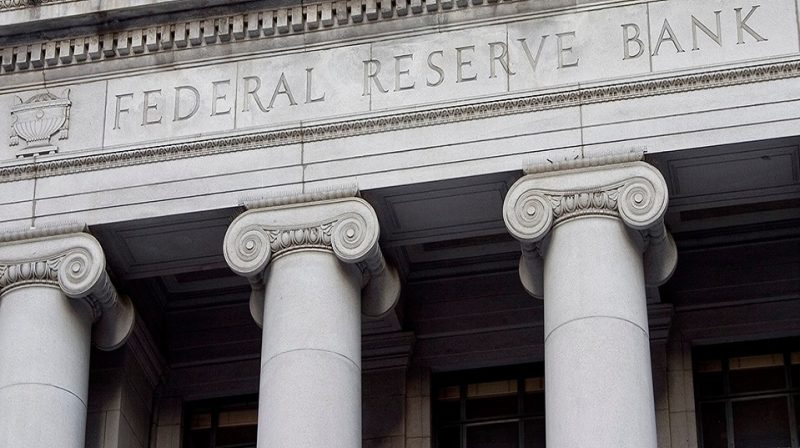by Liz Ann Sonders and Kevin Gordon, Charles Schwab & Company Ltd.
The Federal Open Market Committee (FOMC) of the Federal Reserve did not make any formal changes to its policy, but did signal it would begin raising the fed funds rate soon. “With inflation well above 2% and a strong labor market, the committee expects it will soon be appropriate to raise the target range for the federal funds rate.” In a separate statement, the FOMC noted it expects the balance sheet reduction process (aka, quantitative tightening, or QT) “will commence after the process of increasing the target range for the federal funds rate has begun.” At present, the Fed’s balance sheet is nearly $9 trillion; more than twice its size at the start of the pandemic.
The stepped-up pace of normalizing monetary policy reflects ongoing inflation pressures, including a 7% consumer price index (CPI) rate and the faster retreat in the unemployment rate since the pandemic erupted. In keeping with the latter, the statement eliminated this section of the December statement: “…appropriate to maintain this target range until labor market conditions have reached levels consistent with the Committee’s assessment of maximum employment.”
The announcement said the Fed will conclude asset purchases on schedule in “early March.” The Committee agreed to a basic set of principles for balance sheet reduction, while emphasizing that the fed funds rate remains the Fed’s main policy tool and that it does intend to continue to hold Treasury securities longer-term. Kathy Jones, Schwab’s Chief Fixed Income Strategist, noted that the decision to hold Treasuries “reflects some discomfort on the part of some Fed members that the Fed has gone very far away from its traditional stance in these various quantitative easing programs.” In addition, there may be “discomfort with the idea that by supporting the mortgage market, they may be contributing to the rise in housing prices, which contributes to inflation through the rise in rent.”
The statement did not specify anything concrete with regard to the pace of rate hikes (four of which are priced in by the market this year), but Fed Chair Jerome Powell remarked that “the committee is of a mind to raise the fed funds rate at the March meeting,” which is in keeping with the consensus (and our view). But market watchers should continue to heed the message from the Fed that their ongoing decisions with regard to the pace and frequency of rate hikes will be data dependent; with Fed Chair Jerome Powell continuing to believe that inflation will decline over the course of this year.
The yield on the 10-year Treasury edged up after the announcement and the yield curve steepened a bit. The initial reaction by stocks was to add to the day’s gains; but that soon gave way for another bout of selling as of this writing. Of course that comes in the midst of what has been an extraordinarily volatile year, in large part courtesy of the move toward tighter monetary policy.
Among other notables within the FOMC’s statement was the removal of the previous opening line, which said the Fed was “committed to using its full range of tools to support the U.S. economy in this challenging time.” The statement did, however, reiterate that “risks to the economic outlook remain, including from new variants of the virus.”
Presser highlights
As is always the case with these commentaries, the highlights of the post-meeting press conference with Fed Chair Jerome Powell will only cover about the first 30 minutes in the interest of getting this report into the publishing queue.
- Out of the blocks, Powell was asked about “front-loading” rate hikes (e.g., floating the idea of a hike of 50-basis points vs. the typical 25-basis points) and whether rate hikes are expected at every FOMC meeting. No surprise, he said it was not possible to predict with confidence what the appropriate policy path will be.
- Powell did reiterate that the Fed is “willing to move sooner” and “perhaps faster” than last time, especially given that the economy is quite different from 2015, when the Fed last initiated a rate hiking cycle. As such, the policy decisions will be different as well.
- In response to a question about whether the Fed can undercut inflation without killing jobs, he said “there’s quite a bit of room to raise interest rates without threatening the labor market.” (At this stage in the cycle, we agree.)
- Powell concedes that inflation has been less-than-transitory, and more persistent than the Fed initially expected, with the priority now being to ensure it doesn’t get “entrenched” (perhaps that’s the new key word we might get tired of hearing/seeing, as we did with “transitory”).
- With regard to the balance sheet, Powell said the Fed wants it “to be declining in a predictable manner” by adjusting the reinvestment of maturing securities. He did avoid trying to quantify the equivalence of balance sheet reductions to rate hikes (again emphasizing that rates remain the Fed’s “main tool”).
- Circuitously, Powell said he did not want to address “today’s financial conditions” which online/press chatter suggests it might be code for not wanting to address the weakness in the stock market (which feeds into indexes tracking financial conditions).
In sum
We continue to believe the path toward monetary policy normalization will be bumpy, but that it’s certainly time for the Fed to have started down that path. It became clearer today that the initial rate hike will likely be announced at the next FOMC meeting in mid-March, and the balance sheet will begin to shrink shortly thereafter. There remain unanswered questions regarding the balance sheet runoff process, including precision around timing. However, Powell did reiterate that the fed funds rate remains its primary tool.
Historically, the behavior of the stock market around initial rate hikes was mixed. In the post-WWII era, the one-year lead-in to initial hikes was pretty consistently strong; but there was a significant difference in S&P 500 performance during the first year of rate hikes depending on whether the Fed moved slowly (above-average returns) or moved quickly (slightly negative average returns). Of course, history is never a perfect guide—especially given the addition of the balance sheet into the mix of policy levers.
Heed this from Powell: “The balance sheet is still a relatively new thing for the markets and for us.” In the near term, policy decisions (and market expectations) will be dependent on the combination of economic and inflation data. This year started off with a surge in volatility and significant bouts of weakness; with the likely near-term outlook being more of the same.
Copyright © Charles Schwab & Company Ltd.
















